
The majestic lake sturgeon: a brief overview
Sturgeons are a sight to behold
The lake sturgeon, scientifically known as Acipenser fulvescens, is a fascinating creature, often regarded as an ancient giant of North American waters. This behemoth can live for over 150 years, making it one of the longest-lived fish species in north america.
Lurking primarily in the Great Lakes and Mississippi River basins, the lake sturgeon is the largest fish native to the United States' freshwaters. A mature sturgeon can grow up to seven feet long and weigh over 200 pounds. It's no wonder these massive fish captivate the fishing community and ecologists alike.
Understanding the rarity
Sturgeons are not your everyday catch. Due to their size and long life span, lake sturgeon populations are highly sensitive to environmental changes and overfishing. This has led to significant conservation efforts, particularly in Wisconsin, where the fish are a local icon. The Wisconsin Department of Natural Resources (DNR) has made robust investments in sturgeon conservation programs.
A glimpse into their habitat
Lake sturgeons are primarily bottom feeders. They thrive in freshwater environments like lakes, rivers, and larger streams with moderate current and soft, muddy bottoms. Highly adaptable, these fish migrate seasonally, often moving upstream to spawn. Their spawning grounds range from Lake Winnebago in Wisconsin to the Fraser River in British Columbia.
The DNR wants to ensure that these ancient fish remain a living treasure. As Pete Peeters, a sturgeon expert at the Wisconsin Department of Natural Resources, mentions, "Conserving this species isn't just about the fish. It's about preserving a part of our natural heritage."
Historic catches: notable lake sturgeon records
Notable lake sturgeon records
When it comes to epic fishing tales, few rival the storied catches of lake sturgeon. Over the years, these leviathans of freshwater have given anglers punches of excitement, sorrow, and sheer awe. But there's one catch that stands out among the rest—the legendary world record lake sturgeon.
In April 2012, a group of seasoned fishermen on Lake Winnebago, Wisconsin, ended up reeling in a giant. Weighing in at an astonishing 240 pounds and measuring just over 7 feet long, this colossal fish was eventually verified by the Wisconsin Department of Natural Resources (DNR) as the largest sturgeon caught in modern records. While the life cycle of lake sturgeon, or acipenser fulvescens, is well documented, such a massive specimen still turned heads among both experts and enthusiasts.
Earlier, in October 1953, another massive sturgeon caught the men of the Detroit River by surprise. This fish, officially listed at 7 feet 5 inches and weighing 232 pounds, held the previous recognized record for nearly 60 years. Observers at the U.S. Fish and Wildlife Service declared this beast a wonder of the Great Lakes system.
Canada, home to some of the most renowned sturgeon waters, also holds its own impressive records. The Fraser River in British Columbia, often touted by the locally-based expert Kevin Estrada of Sturgeon Slayers, boasts some of the biggest catches. In June 2014, a group led by Estrada nabbed a monster white sturgeon, believed to make modern records pale in comparison. This catch was a cornerstone in showcasing British Columbia's bountiful fisheries and the conservation strides made in sturgeon preservation.
Records of these magnificent creatures bring forward the tales of angling skill, patience, and unfathomable luck. They remind us of the awe-inspiring varieties of fish our waters can offer. But they also underline the importance of ongoing conservation efforts. Ensuring sustainable fishing practices means future anglers might one day break these records and relish in the euphoria of catching such mythical giants.
Diving deeper into sturgeon's historical catches sheds light on how far sturgeon conservation has come. Which brings us to the bedrock of any sustainable fishing culture: understanding the biology and growth of these giants.
And if you're intrigued by historical catches like the heaviest fish ever caught, don't miss out on more mind-boggling fishing records.
The world record lake sturgeon: an epic catch
Reeling in the record: details of the historic catch
On a chilly day in April 1943, a fisherman named Pete Peeters set out on an ordinary fishing trip on Wisconsin's Wolf River near Shawano Dam. Little did he know, his day would turn extraordinary. Battling icy waters and freezing winds, Peeters hooked what became the world record lake sturgeon.
Chasing the catch: the struggle and skill
This was no easy task. Peeters wrestled with the enormous fish for nearly four hours, a testament to both the sturgeon's strength and his own fishing prowess. Employing knowledge and techniques honed over years, he expertly maneuvered the massive sturgeon closer to his boat. This one fish would change the history of freshwater fishing.
The sturgeon that made history
When finally brought aboard, the sturgeon measured an astonishing 85 inches long and weighed a whopping 168 pounds. This giant sturgeon, identified as Acipenser fulvescens, set the bar for recreational fishers around the world. The fish was officially recorded by the Wisconsin Department of Natural Resources (DNR), marking the catch as historic and permanent.
Local impact: turning a river into a legend
The ripples of Peeters' record catch spread far beyond the banks of Wolf River. The sturgeon brought significant attention to Wisconsin’s fishing opportunities, spurring interest nationwide. It wasn't just a personal victory for Peeters; it put Wisconsin firmly on the map as a premier locale for sturgeon fishing.
Conservation efforts inspired
The spotlight on this amazing fish also highlighted the importance of conservation. The Wisconsin DNR and local organizations implemented strict regulations and initiated robust conservation efforts to protect the sturgeon population, ensuring that future generations might also experience the thrill of catching these giants.
To read more about legendary fishing records, check out this comprehensive guide.
The role of Wisconsin in lake sturgeon conservation
Wisconsin's Pioneering Efforts in Lake Sturgeon Conservation
When it comes to lake sturgeon conservation, Wisconsin has been at the forefront of efforts to ensure the survival of these ancient giants. With over a century of dedicated work, the state's initiatives serve as a beacon for other regions aiming to protect the majestic Acipenser fulvescens.
A robust management program
The Wisconsin Department of Natural Resources (DNR) has spearheaded a rigorous management program that not only focuses on the ongoing study of lake sturgeon but also on their active protection. They employ several strategies ranging from habitat enhancement, egg collection, and even fin clipping of fish for identification.
One significant program involves the careful monitoring and regulation of sturgeon spearing in Lake Winnebago. The DNR sets annual harvest caps to prevent overfishing, ensuring that the sturgeon population remains robust. This balanced approach has made Wisconsin a model of sustainable fish management.
Collaborative efforts with local communities
Local communities play a fundamental role in the success of these conservation efforts. Organizations like the Sturgeon for Tomorrow group collaborate closely with the Wisconsin DNR, raising funds for research and public awareness campaigns. Their collective efforts have seen the resurgence of lake sturgeon in parts of Wisconsin's river systems, including the Wolf River and Shawano Dam.
Scientific research and tagging programs
Scientific research is a bedrock of Wisconsin's conservation strategy. The use of tagging programs where sturgeon are caught, tagged, and released have provided invaluable data on the growth rates, migration patterns, and spawning habits of these fish years after year.
A noteworthy case involves a sturgeon tagged and tracked by the DNR, leading to groundbreaking discoveries about their long-range migration patterns in the Great Lakes region. This knowledge is crucial for devising further conservation strategies to protect these giants.
Sturgeon spawning cycles and habitat restoration
The DNR's focus on habitat restoration has been another keystone of their conservation initiatives. Efforts to rehabilitate spawning grounds along the Wolf River, for instance, have seen significant success. These sites are vital for ensuring the successful reproduction of lake sturgeon.
Kevin Estrada, a renowned sturgeon expert, highlighted the importance of these efforts: "Conserving spawning habitats is crucial for the survival of lake sturgeon. Without these protected areas, we'd see a drastic decline in their populations."
Enforcement and regulations
Strict enforcement of fishing regulations by the DNR has greatly mitigated illegal harvesting of sturgeon. Regulations such as those banning the harvesting of young sturgeon and allowing only mature sturgeon to be targeted have been very effective.
In April each year, the state's natural resources crew conduct meticulous surveys to ensure compliance with these regulations, ensuring that any breaches are swiftly dealt with, preserving the species for future generations.
A legacy of conservation
Wisconsin's role in lake sturgeon conservation is a testament to what can be achieved through dedication, scientific research, and community collaboration. The measures taken by the DNR and local communities have not only ensured the survival of the lake sturgeon but have set a golden example for conservation practices worldwide.
For more insights on massive freshwater fish, check out our exploration on the biggest alligator gar.
The science behind the giants: understanding lake sturgeon growth
Decoding the sturgeon size phenomenon
Lake sturgeons are impressive creatures, often hailed as "living fossils" due to their ancient lineage. However, the sheer size these fish achieve has always been a captivating element for the fishing community and biologists alike. The growth pattern of lake sturgeons, scientifically known as Acipenser fulvescens, is influenced by various factors, which we will decipher here.
Genetic factors
The genetic makeup of lake sturgeons plays a significant role in their growth. Not all sturgeons are destined to reach record-breaking sizes; only those with favorable genetic traits can achieve such feats. Studies by fish biologists have shown that certain populations in North America, particularly those in Wisconsin's Lake Winnebago, have genetic variations that contribute to larger growth.
Feeding habits and diet
Lake sturgeons are bottom feeders, preying on a variety of small fish, insects, and crustaceans. Their diet's richness often determines their growth rate. In fertile waters like the Great Lakes and the Detroit River, where food is abundant, sturgeons grow faster and larger. Kevin Estrada from Sturgeon Slayers highlights that a diet high in protein and nutrients is crucial for sturgeon development.
Habitat and environmental conditions
Environmental conditions are another critical factor. Sturgeons thrive in clean, well-oxygenated waters. The lakes and rivers in Wisconsin, like Lake Winnebago and the Wolf River in Shawano, provide the perfect conditions for these giants to flourish. A long lifespan, which can extend up to 150 years, also gives lake sturgeons ample time to grow to impressive sizes.
Conservation efforts
Wisconsin's Department of Natural Resources (DNR) and other wildlife conservation offices have long implemented strategies that support sturgeon growth, such as regulating overfishing and maintaining clean habitats. Pete Peeters from Alpena Fish and Wildlife Conservation points out that tagging and releasing efforts are pivotal in tracking and fostering the wellbeing of sturgeon populations.
Record-breaking stats
The world record for the largest lake sturgeon was set in 1943 on Lake Winnebago, with a catch weighing an astonishing 170 pounds (77 kg) and measuring over 7 feet (2.13 meters) long. This was a massive adult lake sturgeon that stunned the fishing community and set a benchmark for this magnificent species.
The impact of the record on the fishing community
Lake sturgeon: more than just a fishing trophy
When it comes to the lake sturgeon, the world record isn't just a number—it's become a symbol of hope, challenging anglers to dream big and inspiring conservation efforts. The current world record—set by DNR's natural resources crew on Lake Winnebago in April—resonates deeply in the fishing community. Weighing in at nearly two hundred pounds, this acipenser fulvescens was quite the spectacle, caught and tagged before its triumphant release back into the lake.
A catalyst for conservation
The excitement surrounding record-breaking catches like this has a ripple effect on the broader fishing community, highlighting the importance of the lake sturgeon in our ecosystems. Pete Peeters, a veteran fisherman from Wisconsin, remarks, “Seeing such a big fish alive gives hope; it's living proof that our conservation efforts are working.” The record catch has invigorated local and national sturgeon conservation programs, pushing for stricter regulations on fishing practices.
Bringing communities together
Records create heroes, and these heroes foster communities. The famous catch on Lake Winnebago doesn't just resonate with hardcore anglers; it brings together entire towns. Events like Fish Winnebago Day see locals celebrate this grand species, blending recreational fishing with wildlife conservation.
Boosting local economy
Such records can also boost the economy. Businesses from bait shops to lodging see an influx of tourists eager to try their luck. Kevin Estrada of Sturgeon Slayers has noted a significant uptick in bookings around British Columbia's Fraser River during peak sturgeon spawning seasons. “People love chasing legends,” Estrada says, “and these world records keep the legend alive.”
Stirring the competitive spirit
Every catch and release feeds into the competitive spirit of anglers everywhere. They start preparing meticulously, often collaborating with local DNR or wildlife services to understand migration and spawning patterns. While Lake Winnebago stands tall with its current record, bodies of water like Michigan's Detroit River and Ontario's Great Lakes are breeding grounds for future challenges.
To read more about notable catches and the legends of the water, check out this world-record sunfish article.
Catch and release: ethical considerations in sturgeon fishing
Ethical dimensions of sturgeon fishing: the case for catch and release
While catching a record lake sturgeon, or any sturgeon, can be an exhilarating experience, it's essential to consider the ethical aspects. The debate around catch and release practices is particularly significant for lake sturgeon fishing enthusiasts, with strong opinions on both sides.
Conservation Efforts and Ethical Anglers
Lake sturgeon, especially in the Great Lakes and surrounding areas like Wisconsin, have experienced serious population declines over the years due to overfishing, habitat loss, and pollution. In response, conservation efforts have ramped up, promoted by institutions like the Wisconsin Department of Natural Resources (DNR) and other fish and wildlife services. These efforts emphasize sustainable fishing practices, including catch and release.
Kevin Estrada, a renowned fishing guide with Sturgeon Slayers in British Columbia, states, “Catch and release isn’t just a practice; it’s our responsibility. We owe it to future generations of anglers and to the fish themselves.”
Scientific Perspective: Benefits of Catch and Release
Studies have shown that catch and release practices positively impact sturgeon populations, particularly concerning the reproductive potential of the species. A study published by the U.S. Fish and Wildlife Service highlights that adult lake sturgeon (Acipenser fulvescens) caught and released during their spawning periods on the Wolf River at the Shawano Dam have an increased chance of survival and genetic contribution.
A practical example of this can be seen with the natural resources crew netting lake sturgeon in Lake Winnebago and the Detroit River. The crews also tag and release sturgeon, contributing valuable data for future conservation research.
Angler's Responsibilities: Techniques for Successful Release
For successful catch and release, anglers must adopt specific techniques to minimize harm to these big fish. Using barbless hooks, keeping the fish in the water as much as possible, and carefully supporting its weight during handling are crucial steps. Pete Peeters, a veteran fisherman, shares, “A gentle hand and patience go a long way in ensuring that the fish will live to fight another day.”
This ethical approach to sturgeon fishing ensures that anglers can enjoy the thrill of the catch while contributing to the species' survival.
Catch and release isn't just a trend; it's a lifeline for the lake sturgeon. While the quest for the next world record lake sturgeon continues, ethical fishing practices must remain front and center.
Future prospects: the quest for the next world record
Current efforts and future challenges
The quest for the next world record lake sturgeon is a captivating narrative that continues to evolve. With the current record standing tall, it's a pressing question how long it will remain unchallenged. Lake sturgeons (Acipenser fulvescens) are massive, ancient fish known for their size and longevity, with some even reaching over 200 years old!
Across North America, particularly in the U.S. and Canada, the conservation efforts are tremendous. The Wisconsin Department of Natural Resources (DNR) plays a pivotal role in these efforts. In Lake Winnebago, for instance, regular spawning and tagging programs have been implemented efficiently by the department. Wisconsin alone has a long history with sturgeon, contributing massively to our understanding and preservation of these giant fishes.
However, environmental challenges like pollution, habitat destruction, and climate change wreak havoc continually on sturgeon populations. The Great Lakes and rivers such as the Detroit River and Wolf River (near Shawano Dam) have witnessed notable fluctuations in sturgeon numbers, pushing a spotlight on sustaining their natural habitats.
Preparing for the next giant
Enthusiastic fishers like Kevin Estrada of Sturgeon Slayers in British Columbia are hopeful and extremely dedicated to landing the next behemoth. His crew and several others on the Fraser River and beyond have made it their life's mission to restore and protect these majestic creatures while chasing records.
Records like the largest sturgeon caught in the Great Lakes (record-pound lake sturgeon weighing 240 pounds) give hope and drive to the countless avid fishers aiming for that ultimate catch. The camaraderie and excitement surrounding every significant catch, like the adult lake sturgeon netted by the Alpena Fish Wildlife Conservation office, keep this thrilling community ever bustling.
The future in perspective
Nevertheless, there's a pressing need to balance the thrill of record-setting with ethical fishing practices. The DNRs and Fish Wildlife Services across states and provinces strongly advocate for catch and release methods to ensure the sustainability of sturgeon species. In Wisconsin, for example, all the sturgeons caught during the spring spawning season are tagged, documented, and released back to their natural habitat, thanks to efforts by the wildlife conservation office and other dedicated agencies.
Looking forward, with combined efforts from wildlife agencies, passionate crews, and responsible anglers, breaking the current record isn't just a dream—it's in the realm of possibility. Whether it's on the Fraser River or the shores of Lake Winnebago, the chase is always exhilarating and won't likely stop anytime soon.
To keep up with such incredible catches and more, the community remains on high alert, anticipating that next extraordinary story. And if you're keen on this topic, check out some of the most incredible world record fish caught over the years!

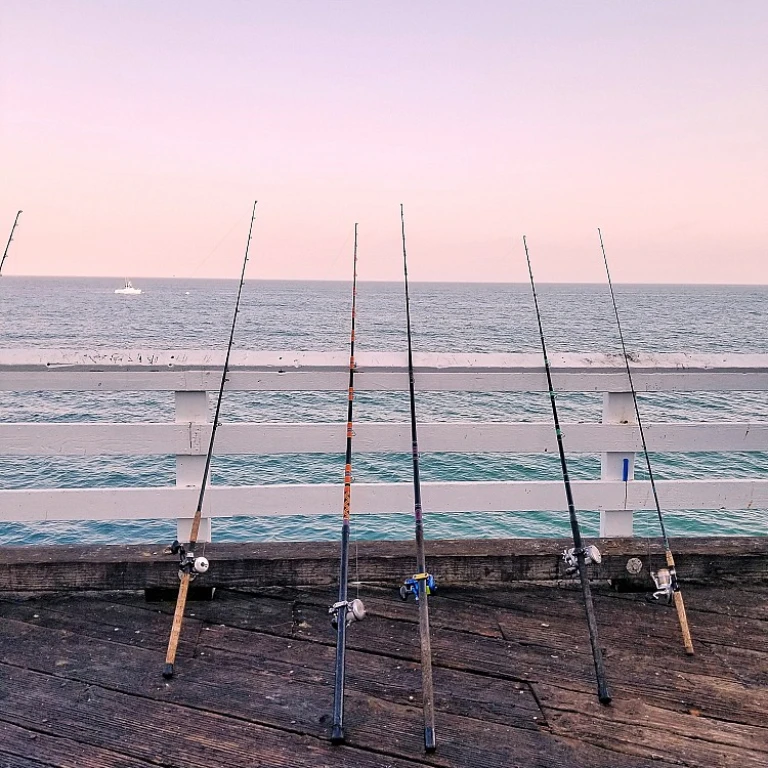


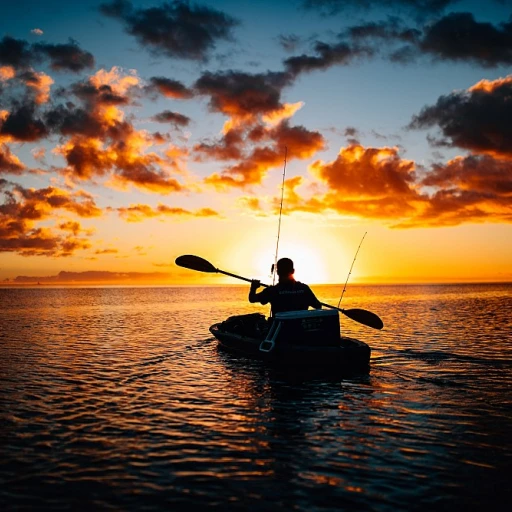
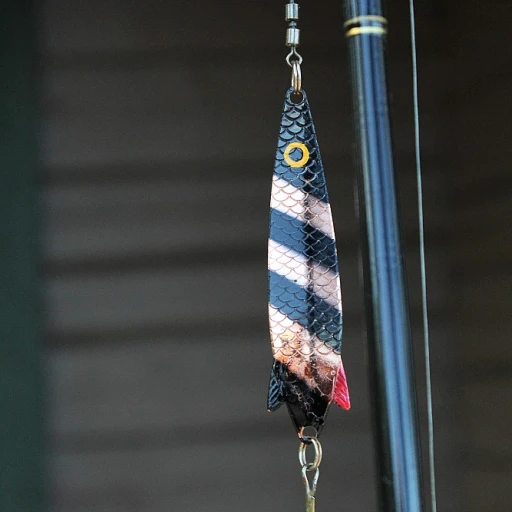
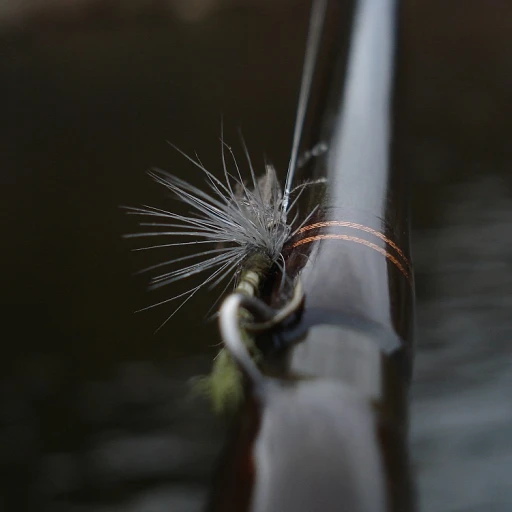
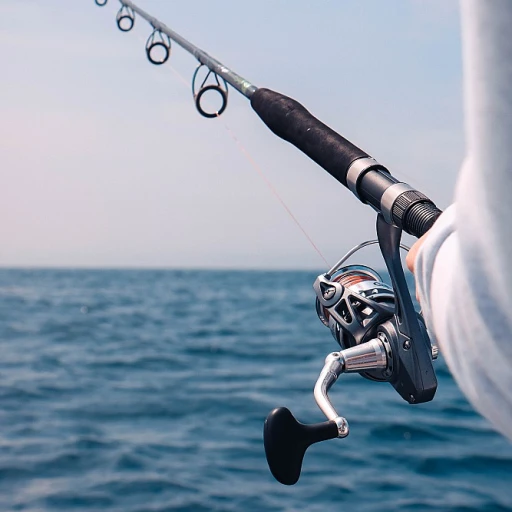
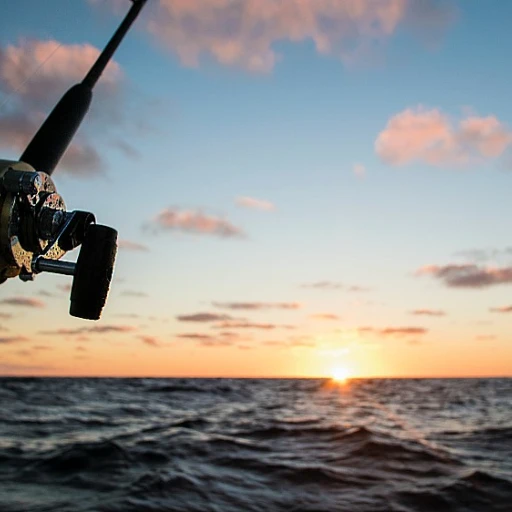

-large-teaser.webp)
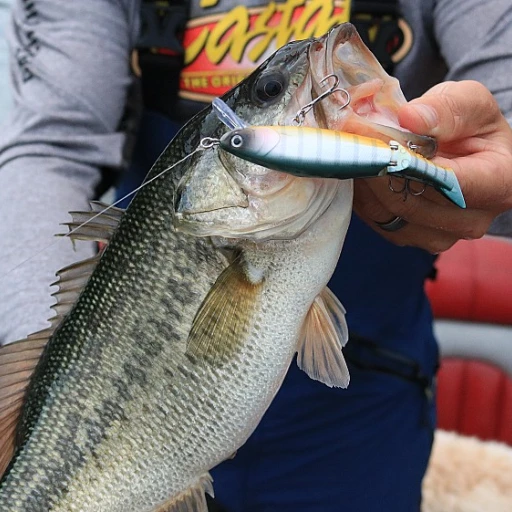
-large-teaser.webp)